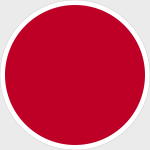DeAgostini DAWF31 Imperial Japanese Navy Mitsubishi A6M3 "Zero" Fighter - Kazuo Tsunoda, 2nd Kokutai, Buna Airfield, New Guinea, 1942 (1:72 Scale)
"We have resolved to endure the unendurable and suffer what is insufferable."
- Japanese Emperor Hirohito, after the Hiroshima bombing
 Aside from the early-morning raid on Pearl Harbor on December 7th, 1941, perhaps the biggest shock for American forces in the Pacific was the outstanding performance of the Imperial Navy's main carrier fighter, the beautifully proportioned Mitsubishi A6M2 Zero-Sen. Some 10,500 Zeros were built by Mitsubishi in no fewer than eight different sub-types, and although outclassed by more powerful US fighters from late 1943 onwards, the Zero retained a modicum of 'combatibility' due to its weight.
Aside from the early-morning raid on Pearl Harbor on December 7th, 1941, perhaps the biggest shock for American forces in the Pacific was the outstanding performance of the Imperial Navy's main carrier fighter, the beautifully proportioned Mitsubishi A6M2 Zero-Sen. Some 10,500 Zeros were built by Mitsubishi in no fewer than eight different sub-types, and although outclassed by more powerful US fighters from late 1943 onwards, the Zero retained a modicum of 'combatibility' due to its weight.
Pictured here is a 1:72 scale replica of an Imperial Japanese Mitsubishi A6M2 "Zero" fighter that was piloted by Kazuo Tsunoda, who was attached to the 2nd Kokutai, then deployed to Buna Airfield, on New Guinea, during 1942.
Now in stock!
Dimensions:
Wingspan: 6-1/2-inches
Length: 5-inches
Release Date: August 2021
Historical Account: "Down on the Farm" - Kazuo Tsunoda (October 11th, 1918 - February 14th, 2013) was an officer and ace fighter pilot in the Imperial Japanese Navy (IJN) during the Second Sino-Japanese War and Pacific Campaign of World War II. In his combat career, Tsunoda was officially credited with destroying nine enemy aircraft.
From May 1942 to May 1943, Tsunoda participated in the New Guinea Campaign, Solomon Islands and Guadalcanal Campaigns as a member of the 2nd Air Group and 582 Air Group. During the Naval Battle of Guadalcanal on November 14th, 1942, Tsunoda was shot down near the Russell Islands while covering an army transport convoy delivering troops to Guadalcanal. Tsunoda was rescued by the destroyer Amagiri.
In November 1944, while stationed at Cebu in the Philippines, Tsunoda volunteered as a kamikaze pilot. He was unable, however, to find any enemy ships to attack. Later, he escaped the Philippines to Japanese-occupied Taiwan after the American landings and survived the war.
He was a farmer in Ibaraki prefecture after the war. He died on February 14, 2013.


